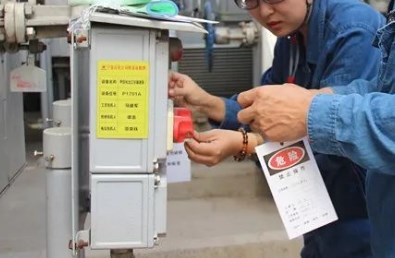Electric lock
In cases of electrical hazards, make sure all power supplies are under control. Lock personnel should be able to conduct electrical hazard assessment and treatment. Additional safety measures such as the use of insulating gloves or insulating panels should be taken for possible live work or for locking live equipment accessories.
Electrical personal lock
When doing electrical equipment maintenance work, the electrical isolation point shall be Lockout\tagout and tested by the electrical staff, then the maintenance staff shall confirm and Lockout tagout again. Operators should place warning signs at start buttons/switches on site. Isolation points at the site are individually locked.
Collective electrical lock
In the case of collective locking, the electrical personnel will put the key into the collective locking box after isolating the power supply point Lockout tagout and testing, the maintenance personnel will lock the collective locking box after confirming the isolation point Lockout tagout, and the operators will hang warning signs at the start button/switch on site. Isolation of the work site is performed by collective locking.
Electrical locking points
– The main power switch is the main locking point of the electrical drive equipment, and the attached control equipment such as the field start/stop switch is not the locking point.
– If the voltage is below 220 V, unplugging the plug can be regarded as effective isolation. If the plug is not in the line of sight of the operator, a warning expression of “Danger do not operate” must be put on the plug or the plug must be locked in the sleeve to prevent others from plugging in the plug.
– If the circuit adopts fuse/relay control panel power supply mode and cannot be locked, it should be installed with false fuse and warning label of “danger prohibited operation”.

Post time: Mar-05-2022






